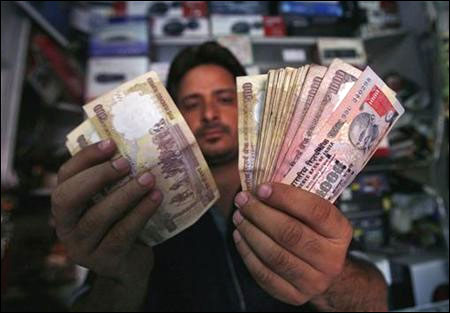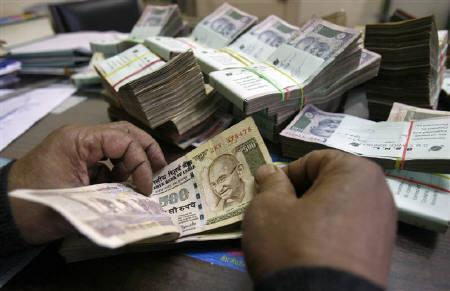
The Reserve Bank of India's purchase of bonds via open market operations (OMOs) to infuse liquidity seems to be serving the primary objective of ensuring smooth sailing of the government's borrowing programme, as liquidity in the system remains tight.
According to market participants, the OMOs have also come in handy at a time when the central bank is intervening in the foreign exchange market almost regularly to stem the sharp depreciation of the domestic currency.
The liquidity deficit, indicated by banks' borrowing from the RBI's repo window, is around Rs 1.2 lakh crore (Rs 12 trillion), double the central bank's comfort zone of plus/minus one per cent of net demand and time liabilities.
This year, the government has pegged gross market borrowings of Rs 5.69 lakh crore, of which 65 per cent will be raised in the first half itself.
Click on NEXT for more...

In order to make OMOs a success, the central bank is choosing recently auctioned papers that are liquid, as demand for those securities is high.
On May 4, the government had auctioned three securities - 8.19 per cent maturing in 2020, 9.15 per cent maturing in 2024 and 8.97 per cent maturing in 2030. These were bought by the RBI in OMOs on Friday.
In the current week too, the RBI will buy papers like 8.24 per cent maturing in 2018, 8.28 per cent maturing in 2027 and 8.79 maturing in 2021, issued a week ago. The outstanding amount in most of these securities is above Rs 60,000 crore (Rs 600 billion), while some have Rs 20,000-30,000 crore (Rs 200-300 billion).
"OMOs by the RBI serve the dual purpose of providing liquidity and supporting the government's borrowing plan. The choosing of recent and more liquid papers for OMOs by the RBI enhances the probability of its success. Given that the amount of OMOs conducted by the RBI is not excessive, one should not be overly concerned about the issue of monetisation of government debt," said Siddhartha Sanyal, chief economist, Barclays.
Click on NEXT for more...

In December 2011, the OMO auctions received poor response as most securities chosen were illiquid. However, this time around, the central bank has been careful to choose a mix of liquid as well as illiquid securities, including the top two traded government securities.
"Such a combination is good as traders may have the recently auctioned securities while investors may use OMOs to offload illiquid papers," said N S Venkatesh, head of treasury, IDBI Bank.
By buying recently auctioned securities, the central bank has ensured yields are kept under check so that the cost to the government does not go through the roof - as happened last year when the borrowing plan was increased in September. Yields had shot up to three-year high levels of nine per cent, making the borrowing cost dearer.
"These securities have higher outstanding and, hence, will remain the central bank's choice to infuse liquidity for some time. This is helping keep the pressure off bond yields," Vivek Rajpal, India rates strategist, Nomura.
He also said interventions in the foreign exchange market and tight liquidity conditions were causing the RBI to conduct OMOs in the first half of the current financial year, which was helping the bond market negate supply pressures.
RBI has sold $20 billion in the spot market during the September-March period to arrest the rupee fall. "The market prefers liquid securities in OMOs as there is price discovery," said a senior treasury official at a large public sector bank.
So far, the central bank has infused Rs 9,800 crore (Rs98 billion) via OMOs. Last financial year, the RBI purchased more than Rs 1 lakh crore (Rs 1 trillion) of government securities to offset the impact of heavy government borrowing on yields and liquidity.